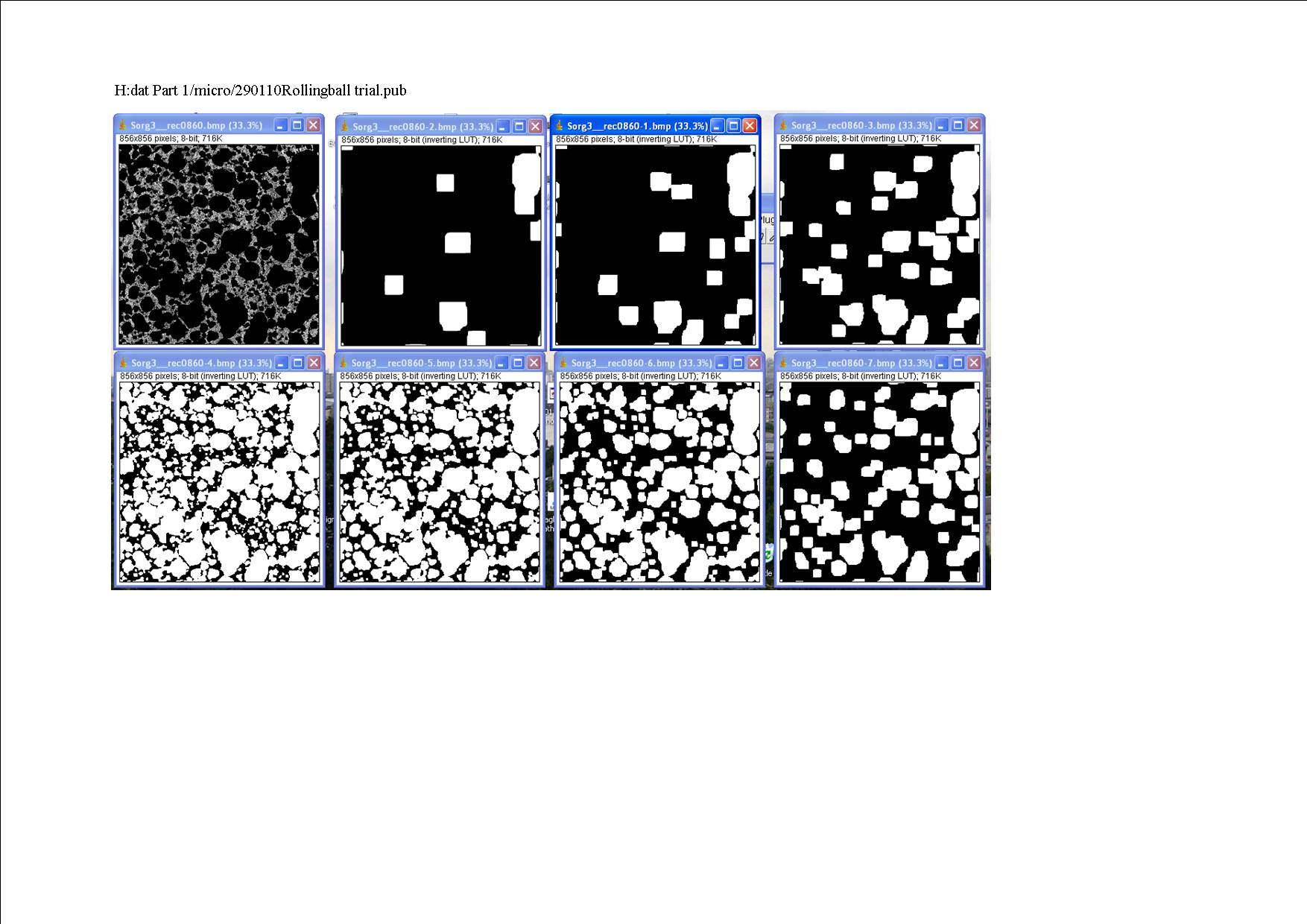sizing irregular objects
|
Hello, I want to size the bubbles in a solid foam with irregular bubble shapes and linked/fused bubbles, from micro Xray tomography data. After farting round endlessly with the granulometry and other filters, I have
*used the Process/Subtract backg/choosing Light backg and Create backg options on the raw image with decreasing pixel size *thresholded the resulting image series to give only the most intense regions I have a series of shapes of increasing resolution and decreasing size categories, near to the resolution of the raw image. See  . .
I now want to use this series to 'bin' the bubbles into size clases. Which must involve using the rolling ball series as masks to identify the maximal size a particular object falls into. And somehow carrying a numbering over on the finest resoluion rolling ball image. I want to do image subtraction, but with some kind of numbering attached. Appreciate anyone with suggestions as to how I could go about this? Or other comments that will help me? This data also sizes bubble intersections or 'throats'. If two spots merge when the ball pixel size is stepped down, the throat size must be between the two ball sizes. Teresa |
|
Hi Teresa,
your problem looks like a typical application of the Euclidian distance map (EDM, Process>Binary>Distance Map) to me. The maxima (process>binary>find maxima) of the distance map give you the centers, and the values at these points are the radii of the bubbles (this is valid only if the bubble has at least some edge points over an arc of more than 180°). Throats should be saddle points in the EDM. You could try whether you can get them an intersection points between the segmentation lines of the watershed segmentation of the EDM and the inverted EDM ('Find Maxima' with output type 'Segmented particles'). Note that the rolling ball background in 'Process>Subtract Background' is a only a very rough approximation. Only a square part of the ball's surface is used (omitting ball areas with a large slope), so it is not very suitable for your needs. Also, to speed up the process, for radii>10, the image is scaled down, leading to artifacts and inconsistent radii. The inconsistency was not corrected to avoid breaking many established macros that are tuned to work with this behavior. The sliding paraboloid is somewhat better, but has additional code for avoiding edge artifacts. This would cause problems when misusing it as a substitute of a distance map. Michael ________________________________________________________________ On 29 Jan 2010, at 11:56, Teresa W wrote: > Hello, I want to size the bubbles in a solid foam with irregular > bubble > shapes and linked/fused bubbles, from micro Xray tomography data. > After > farting round endlessly with the granulometry and other filters, I > have > > *used the Process/Subtract backg/choosing Light backg and Create backg > options on the raw image with decreasing pixel size > *thresholded the resulting image series to give only the most intense > regions > > I have a series of shapes of increasing resolution and decreasing size > categories, near to the resolution of the raw image. > > See http://n2.nabble.com/file/n4479291/290110Rollingballtrial.jpg . > > I now want to use this series to 'bin' the bubbles into size > clases. Which > must involve using the rolling ball series as masks to identify the > maximal > size a particular object falls into. And somehow carrying a > numbering over > on the finest resoluion rolling ball image. I want to do image > subtraction, > but with some kind of numbering attached. > > Appreciate anyone with suggestions as to how I could go about this? > Or other > comments that will help me? > > This data also sizes bubble intersections or 'throats'. If two > spots merge > when the ball pixel size is stepped down, the throat size must be > between > the two ball sizes. > > Teresa > > -- > View this message in context: http://n2.nabble.com/sizing-irregular- > objects-tp4479291p4479291.html > Sent from the ImageJ mailing list archive at Nabble.com. |
«
Return to ImageJ
|
1 view|%1 views
| Free forum by Nabble | Edit this page |

